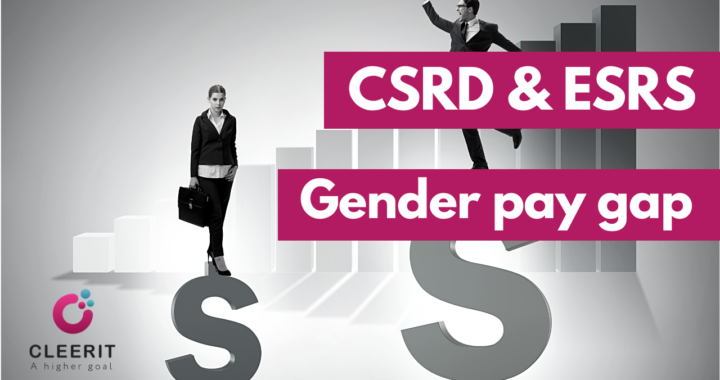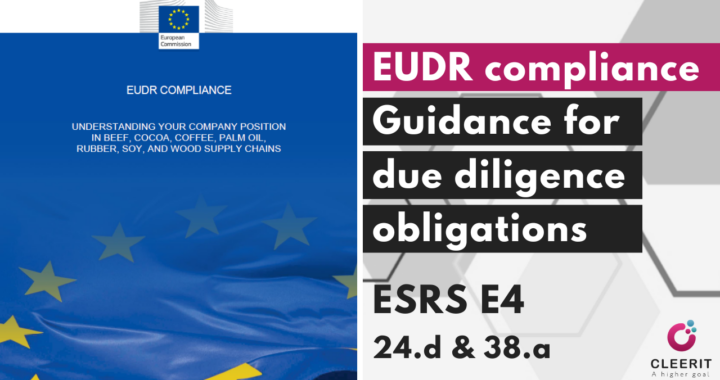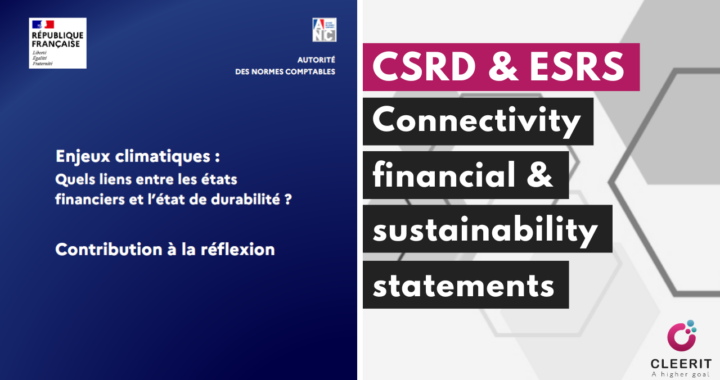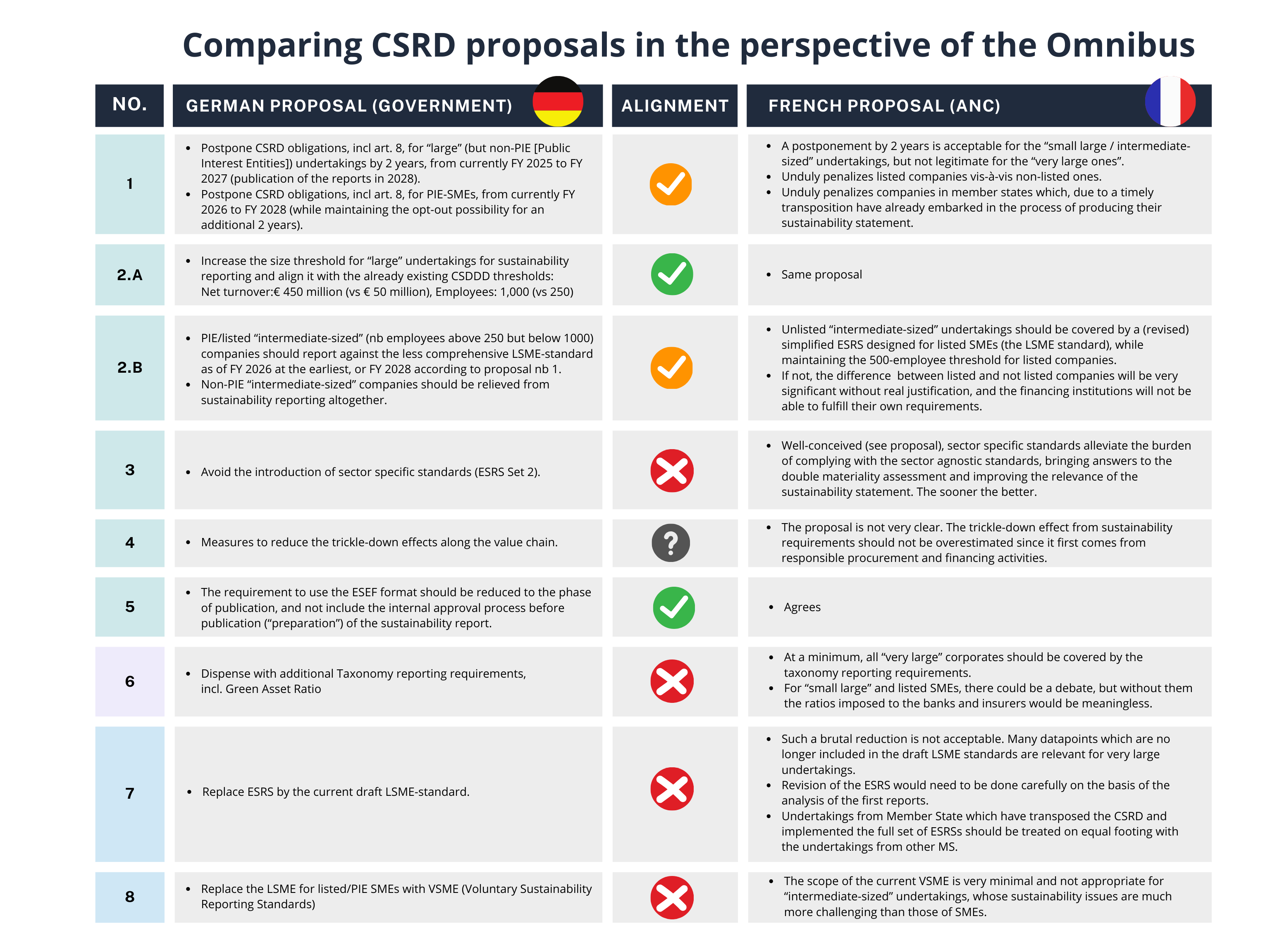The French Accounting Standards Authority has released an educational publication on the subject: “Climate matters: what are the links between financial statements and the sustainability statement?”
- Topic: What coherence and complementarity can be expected from the information presented in the sustainability statement (ESRS standards) and the financial statements (IFRS standards or French standards)?
- Objective: Better understand the articulation between these two pillars of corporate information in order to support stakeholders in the appropriation of these complex and evolving subjects.
Summary:
Climate matters and sustainability statements
Climate disruption generates physical and transition risks affecting the assets, liabilities and activities of companies and their value chain(s).
Physical risks result from acute climatic hazards (e.g. storms, floods) and chronic (e.g. rising sea levels, prolonged droughts).
Transition risks, on the other hand, are linked to regulatory, technological, market or reputational developments as part of the transition to a low-carbon economy (e.g. stricter emissions standards, emergence of new technologies making existing technologies obsolete, change in the perception of companies based on their sustainability strategy).
These risks lead to current and future financial effects.
The commitments made and plans implemented by companies to mitigate climate change and adapt to its consequences require investments and financial resources today and tomorrow.
When they are material, climate risks (as well as opportunities), commitments, and their financial effects must be published in the sustainability statement.
These financial effects include the impacts on the financial position, financial performance and cash flows in the short, medium and long term (e.g. value of assets exposed to physical risk, turnover related to exposed activities).
The sustainability statement is established according to the European sustainability reporting standards, ‘ESRS’, for companies subject to the ‘CSRD’.
This sustainability statement is subject to mandatory verification.
Climate matters and financial statements
At the same time, these same climate risks and commitments are part of the contextual elements, assumptions, or input data considered in the preparation of financial statements established according to international financial reporting standards (‘IFRS’ or “International Financial Reporting Standards”) or French accounting standards (‘PCG’ or General Accounting Plan).
Depending on their nature, and depending on the applicable accounting principles, certain climate issues may have an impact on the financial statements in the form of recognized items or information in the appendix (e.g.: the revision of the useful life of certain assets), others do not generate any immediate effect or information presented in the financial statements.
The accounting (IFRS, PCG) and sustainability (ESRS) regulatory frameworks have differences
Although financial materiality is defined in the same way (information is material if its presentation or omission can influence the decisions of investors/lenders), its conditions of application may vary depending on the reporting scope, time horizons, and evaluation and reporting criteria and thresholds.
Furthermore, financial statements generally reflect rights and obligations existing at the closing date, while the sustainability statement also provides a large amount of prospective information (e.g. emissions targets, future financial effects, etc.).
What is presented in the ESRS sustainability statement is therefore not necessarily intended to be included in the financial statements, and vice versa.
Connectivity between the sustainability statement and the financial statement
According to EFRAG, connectivity refers to the ability to integrate and articulate information from the different sections of the annual report to create a set of coherent and complementary information that allows users of the reports to make informed decisions.
Connectivity is specifically required in the sustainability statement by the ESRS, in connection with the financial statements.
The analysis of standards and illustrative cases shows that, although the two pillars of information each respond to distinct rules, their connection, rather than their juxtaposition, highlights their coherence and complementarity.
This provides a holistic view of how the company addresses, and is affected by, climate matters.
Food for thought for companies
Some companies are implementing an integrated approach to facilitate the management of climate matters and inform strategic, financial or operational decisions (e.g.: definition of action priorities and financial plans).
This approach can be organized at several levels, including: governance (e.g.: awareness of the requirements, limits and interconnections of reporting frameworks), organization (e.g.: coordination of reporting and operational teams on climate issues), and internal control.
This integrated approach facilitates the alignment of the assumptions for developing the two reports (e.g.: concerning investments and financial resources allocated to climate mitigation and adaptation actions, global warming scenarios, regulatory developments).
The ESRS therefore require that any points of convergence or divergence be explained in the sustainability statement and that direct links (i.e. amounts coming directly from the financial statements) or indirect links (i.e. aggregation or decomposition of the amounts presented in the financial statements) be highlighted.
Food for thought for all stakeholders
To promote better connectivity, the following possibilities for improvement are proposed to the authorities, to the extent that this reflection goes beyond the operational framework of companies and involves broader considerations at the national and European level:
- raise awareness and train stakeholders in the connectivity between financial statements and sustainability statements,
- use the analyses of the first publications to contribute to reflections at the national, European and international levels,
- integrate specific financial effects into future sectoral sustainability standards (e.g. research and development expenditure for low-carbon products),
- continue reflection on the evolution of accounting standards in relation to climate issues, and promote the incorporation of climate risks into company valuation
The full document (in French) can be downloaded here >>>
#getCSRDready, #CSRD, #ESRS










